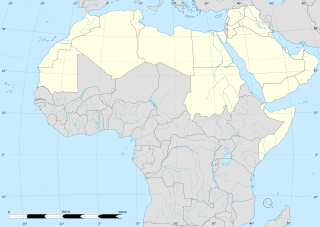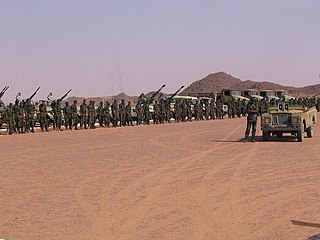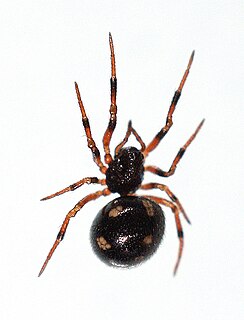
Morocco, officially the Kingdom of Morocco, is a country located in the Maghreb region of North Africa. It overlooks the Mediterranean Sea to the north and the Atlantic Ocean to the west, with land borders with Algeria to the east and Western Sahara to the south. Morocco also claims the exclaves of Ceuta, Melilla and Peñón de Vélez de la Gomera, all of them under Spanish jurisdiction, as well as several small Spanish-controlled islands off its coast. The capital is Rabat and the largest city is Casablanca. Morocco spans an area of 710,850 km2 (274,460 sq mi) and has a population of over 36 million.

Morocco spans from the Mediterranean Sea and Atlantic Ocean on the north and the west respectively, into large mountainous areas in the interior body, to the Sahara desert in the far south. Morocco is a Northern African country, located in the extreme north west of Africa on the edge of continental Europe. The strait of Gibraltar separates Spain off Morocco with a 13 kilometres (8.1 mi) span of water. Morocco borders the North Atlantic Ocean to the west, and the west Mediterranean Sea to the north.

North Africa is a region encompassing the northern portion of the African continent. There is no singularly accepted scope for the region, and it is sometimes defined as stretching from the Atlantic shores of Mauritania in the west, to Egypt's Suez Canal and the Red Sea in the east. Others have limited it to the countries of Algeria, Morocco, and Tunisia, a region that was known by the French during colonial times as "Afrique du Nord" and is known by Arabs as the Maghreb. The most commonly accepted definition includes Morocco, Algeria, Tunisia, Libya, Egypt, and Sudan, the 6 countries that shape the top North of the African continent. Meanwhile, "North Africa", particularly when used in the term Middle East and North Africa (MENA), often refers only to the countries of the Maghreb and Libya.

Western Sahara is a disputed territory on the northwest coast and in the Maghreb region of North and West Africa, partially controlled by the self-proclaimed Sahrawi Arab Democratic Republic and partially occupied by neighboring Morocco. Its surface area amounts to 266,000 square kilometres (103,000 sq mi). It is one of the most sparsely populated territories in the world, mainly consisting of desert flatlands. The population is estimated at just over 500,000, of which nearly 40% live in Laayoune, the largest city in Western Sahara.

Western Sahara, formerly the Spanish colony of Spanish Sahara, is a disputed territory claimed by both the Kingdom of Morocco and the Popular Front for the Liberation of the Saguia el Hamra and Rio de Oro, which is an independence movement based in Algeria. It is listed by the United Nations (UN) as a non-decolonized territory and is thus included in the United Nations list of Non-Self-Governing Territories.

The Atlas Mountains are a mountain range in the Maghreb. It separates the Mediterranean and Atlantic coastlines from the Sahara Desert. It stretches around 2,500 km (1,600 mi) through Morocco, Algeria and Tunisia. The range's highest peak is Toubkal, which is in southwestern Morocco, with an elevation of 4,167 metres (13,671 ft). The Atlas mountains are primarily inhabited by Berber populations. The terms for 'mountain' are adrar and adras in some Berber languages. These terms are believed to be cognates of the toponym Atlas. The mountains are also home to a number of animals and plants which are mostly found within Africa but some of which can be found in Europe. Many of these species are endangered and a few are already extinct.

The Arab world, also known as the Arab nation, the Arabsphere, or the Arab states, consists of the 22 Arab countries which are members of the Arab League. A majority of these countries are located in Western Asia, North Africa, and the Horn of Africa; the southernmost member, the Comoros, is an island country off the coast of East Africa. The region stretches from the Atlantic Ocean in the west to the Arabian Sea in the east, and from the Mediterranean Sea in the north to the Indian Ocean in the southeast. Arabic is used as the lingua franca throughout the Arab world.

The Polisario Front, Frente Polisario, FRELISARIO or simply POLISARIO, from the Spanish abbreviation of Frente Popular de Liberación de Saguía el Hamra y Río de Oro, is a Sahrawi rebel national liberation movement aiming to end Moroccan presence in the Western Sahara. It is a consultative member of the Socialist International. The United Nations considers the Polisario Front to be the legitimate representative of the Sahrawi people and maintains that the Sahrawis have a right to self-determination. The Polisario Front is outlawed in the parts of Western Sahara under Moroccan control, and it is illegal to raise its party flag there.

The Maghreb, also known as Northwest Africa, the Arab Maghreb is a subregion of North Africa that is effectively a western part of the Arab world and is predominantly Muslim. The region includes Algeria, Libya, Mauritania, Morocco, and Tunisia, which are all member states of the Arab Maghreb Union (AMU). The Maghreb additionally includes the disputed territories of Western Sahara and the cities of Ceuta and Melilla. As of 2018, the region had a population of over 100 million people.

The crested lark is a species of lark distinguished from the other 81 species of lark by the crest of feathers that rise up in territorial or courtship displays and when singing. Common to mainland Europe, the birds can also be found in northern Africa and in parts of western Asia and China. It is a non-migratory bird, but can occasionally be found as a vagrant in Great Britain.

The Moroccan Western Sahara Wall is an approximately 2,700 km (1,700 mi) long structure, mostly a sand wall, running through Western Sahara and the southwestern portion of Morocco. It separates the Moroccan-occupied areas on the west from the Polisario-controlled areas on the east.

The desert lark breeds in deserts and semi-deserts from Morocco to western India. It has a very wide distribution and faces no obvious threats, and surveys have shown that it is slowly increasing in numbers as it expands its range. The International Union for Conservation of Nature has rated its conservation status as being of "least concern".

The Southern Provinces or Moroccan Sahara are the terms used by the Moroccan government for Western Sahara. These two official Moroccan denominations explicitly include all of Western Sahara, which spans three of country's 12 top-level administrative regions. A frequent use of the term "Southern Provinces" is found for example in Moroccan state television.

The Arab Maghreb Union (AMU) is a trade agreement aiming for economic and future political unity among Arab countries of the Maghreb in North Africa. Its members are the nations of Algeria, Libya, Mauritania, Morocco and Tunisia. The Union has been unable to achieve tangible progress on its goals due to deep economic and political disagreements between Morocco and Algeria regarding, among others, the issue of Western Sahara. No high level meetings have taken place since 3 July 2008, and commentators regard the Union as largely dormant.

The Western Sahara conflict is an ongoing conflict between the Polisario Front and the Kingdom of Morocco. The conflict originated from an insurgency by the Polisario Front against Spanish colonial forces from 1973 to 1975 and the subsequent Western Sahara War against Morocco between 1975 and 1991. Today the conflict is dominated by unarmed civil campaigns of the Polisario Front and their self-proclaimed SADR state to gain fully recognized independence for Western Sahara.

Agrotis is a genus of moths of the family Noctuidae. The genus was erected by Ferdinand Ochsenheimer in 1816. A number of the species of this genus are extinct.

Agrotis trux, the crescent dart, is a moth of the family Noctuidae. The species was first described by Jacob Hübner in 1824. It has a circum-Mediterranean distribution and is found along the coasts of France, Ireland, England, southern Europe, Algeria, Syria, Iraq, Iran, southern Russia and the Arabian Peninsula. In Africa, it is found as far south as South Africa.

Crustulina is a genus of comb-footed spiders that was first described by Anton Menge in 1868.

The Algeria–Morocco border is 1,427 km in length and runs from Mediterranean Sea in the north, to the tripoint with Western Sahara in the south.

The Algeria–Western Sahara border is 41 km in length and runs from the tripoint with Morocco in the north to the tripoint with Mauritania in the south.




















